Bust of a high-ranking official of the Empire wearing a fringed paludamentum
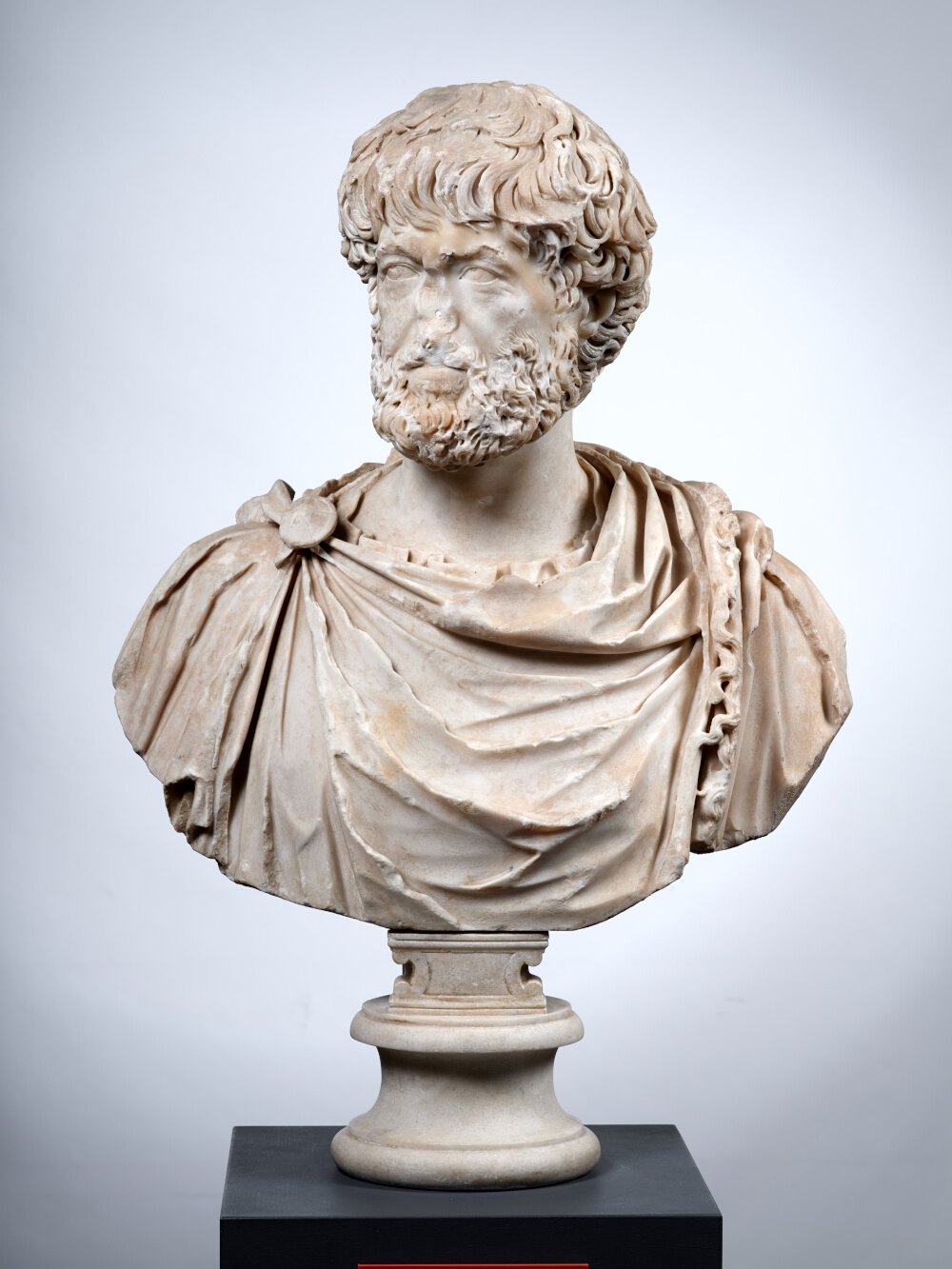
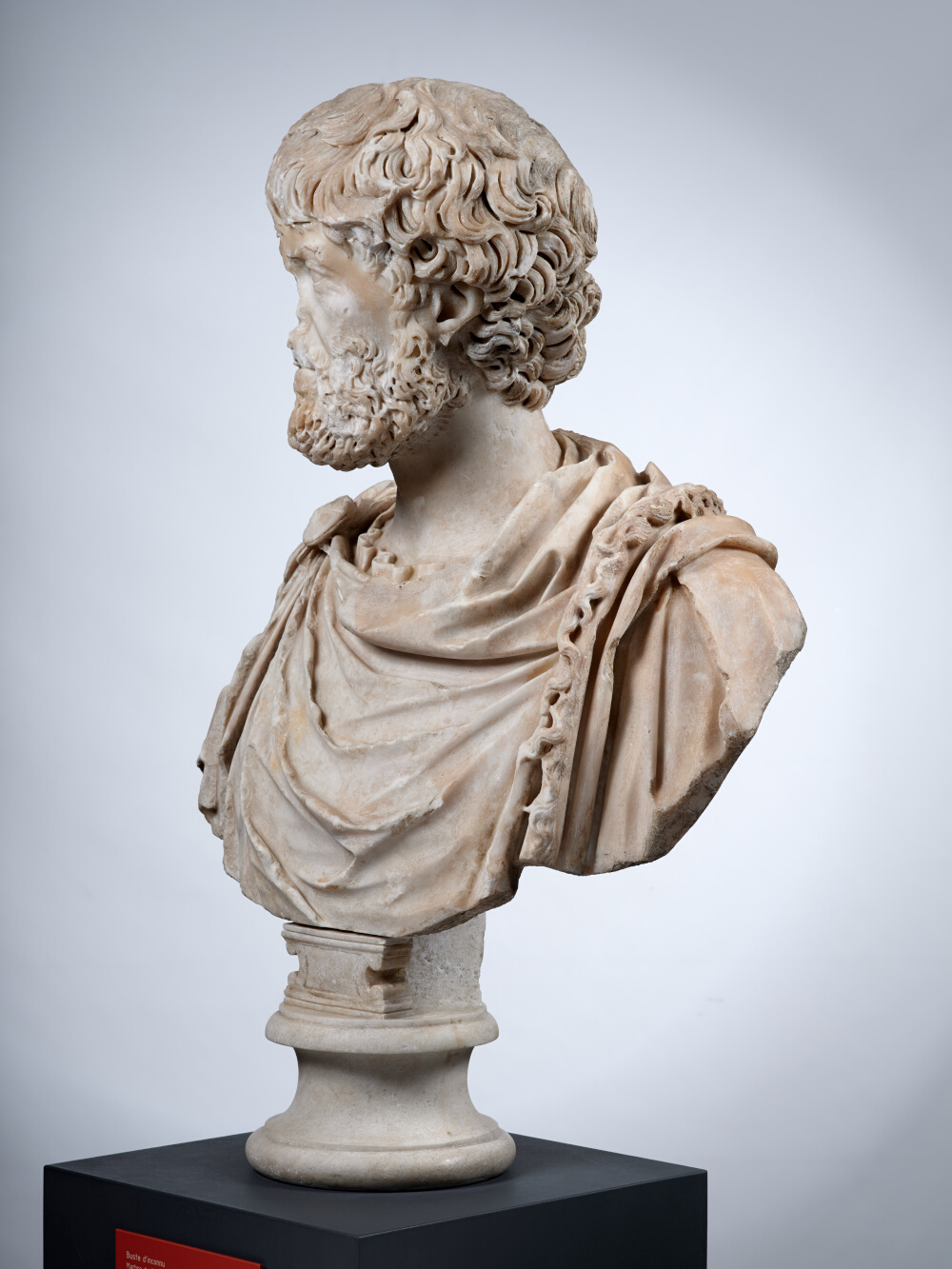
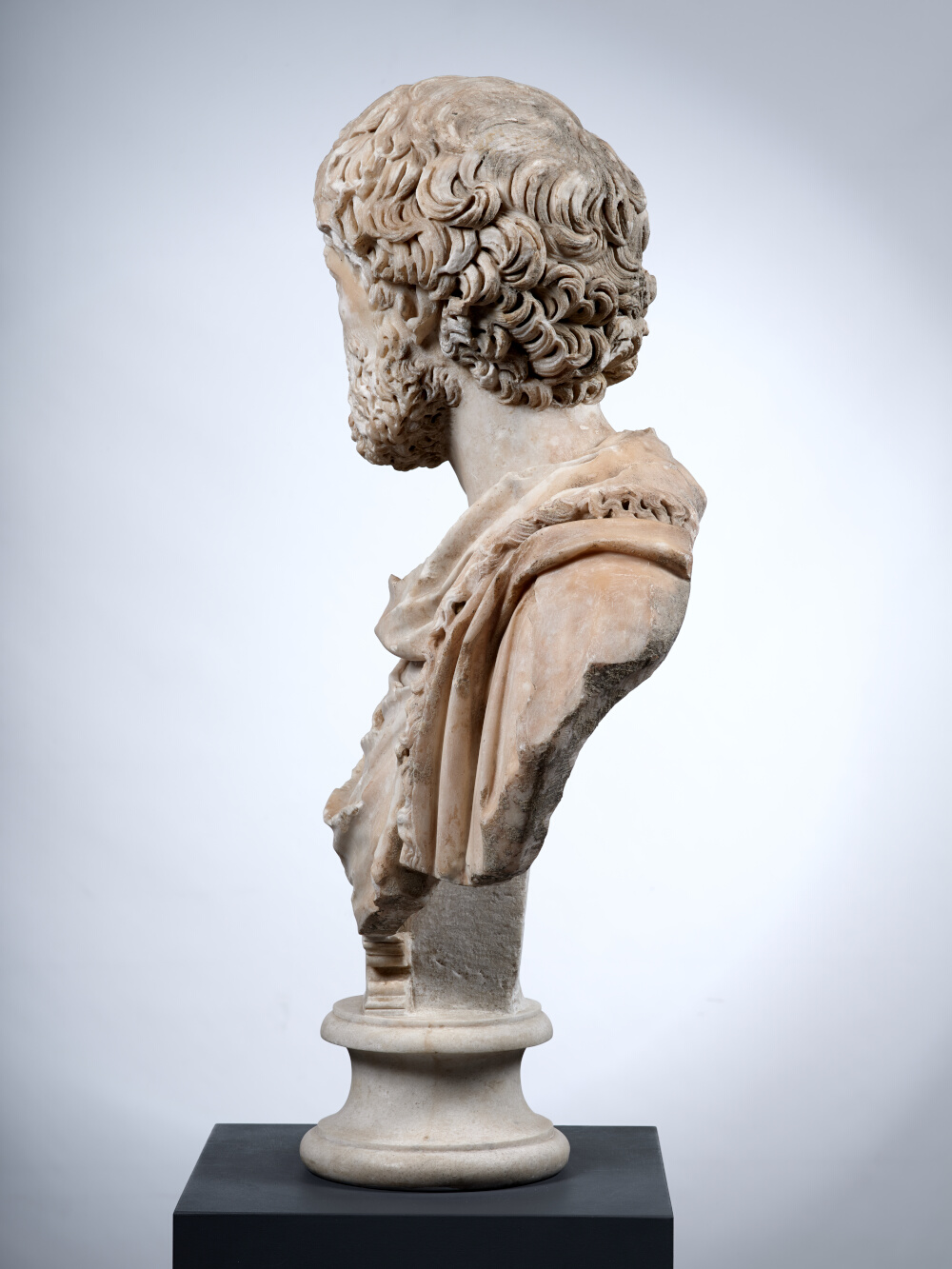
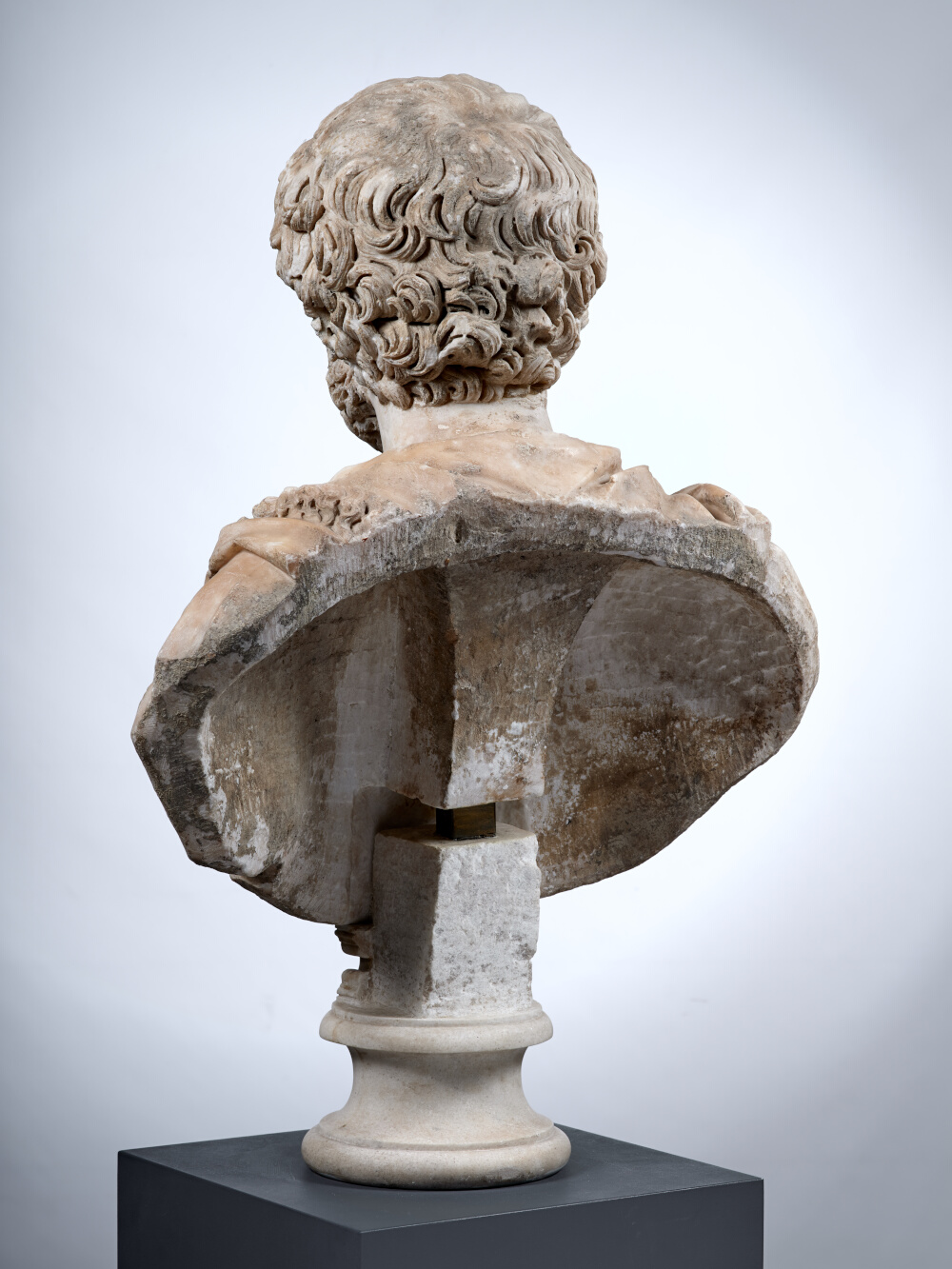
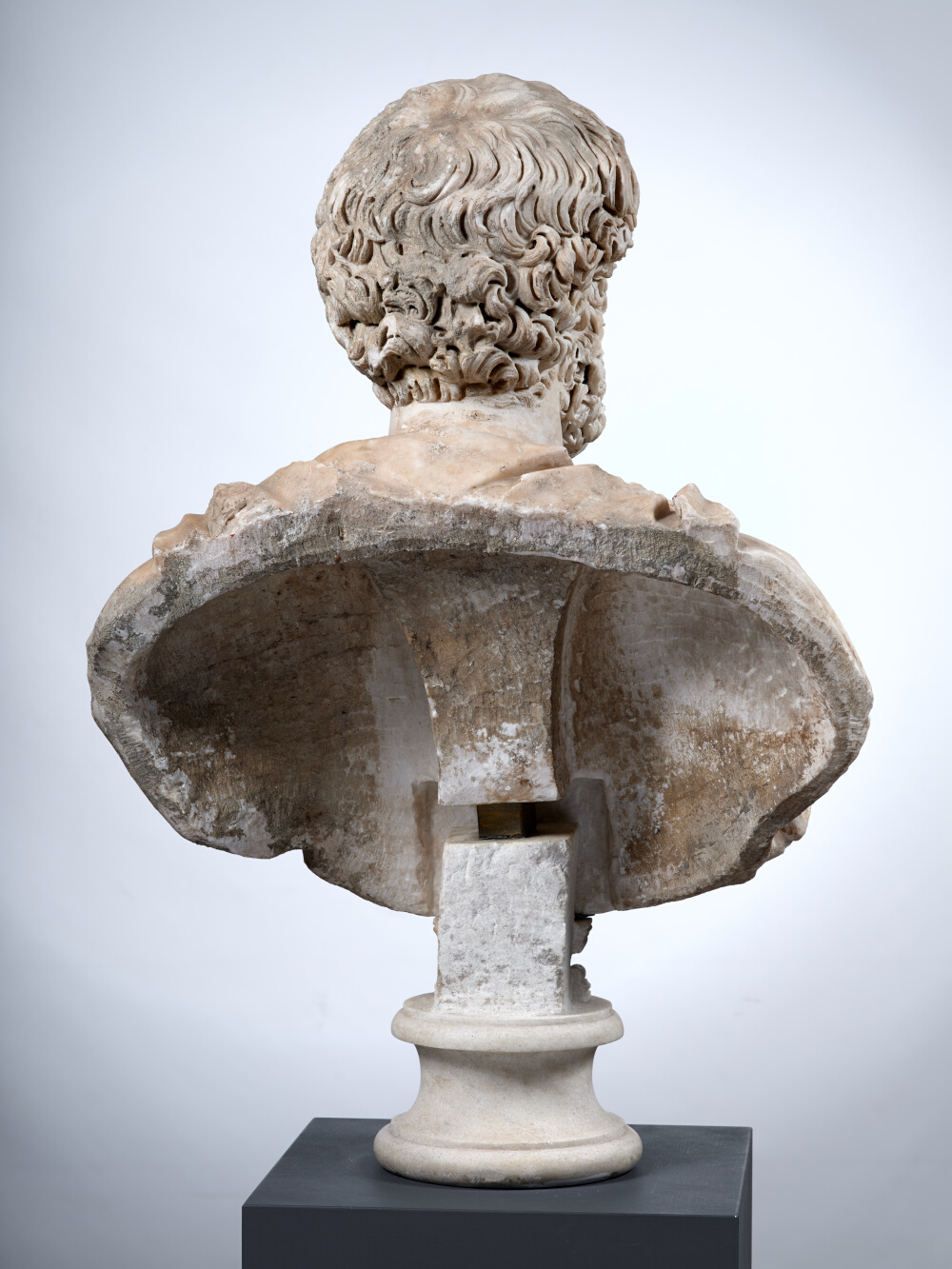
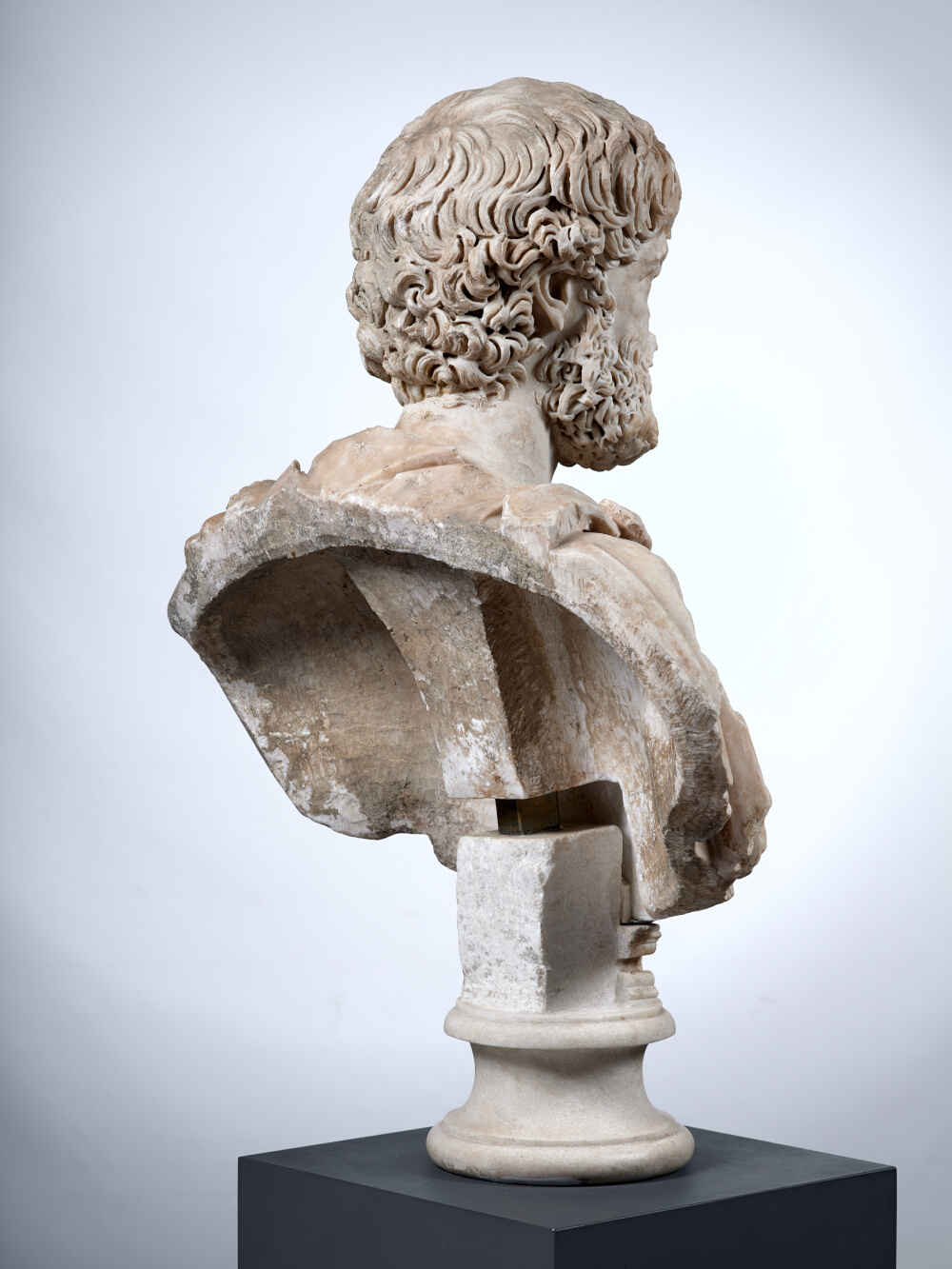
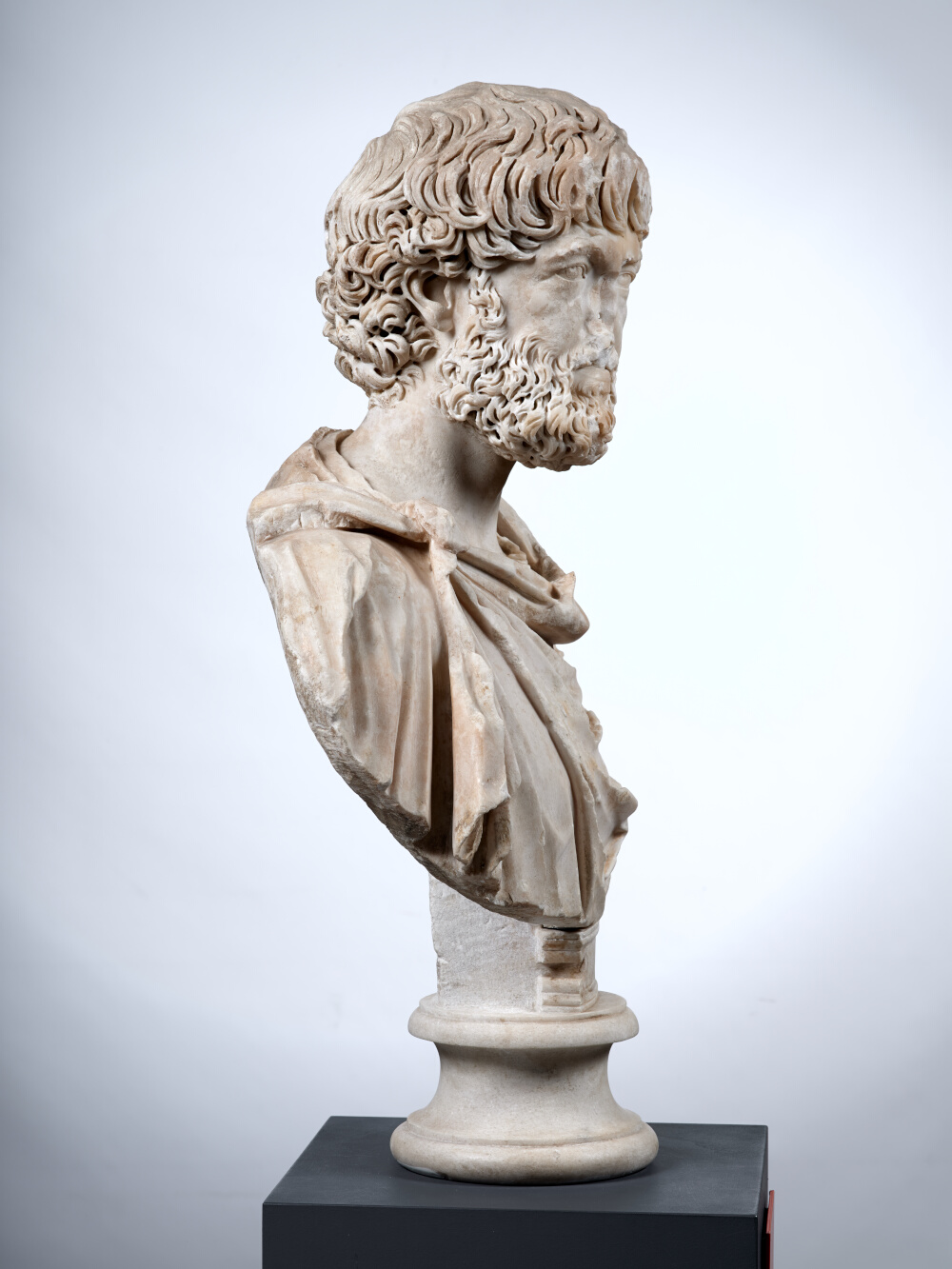
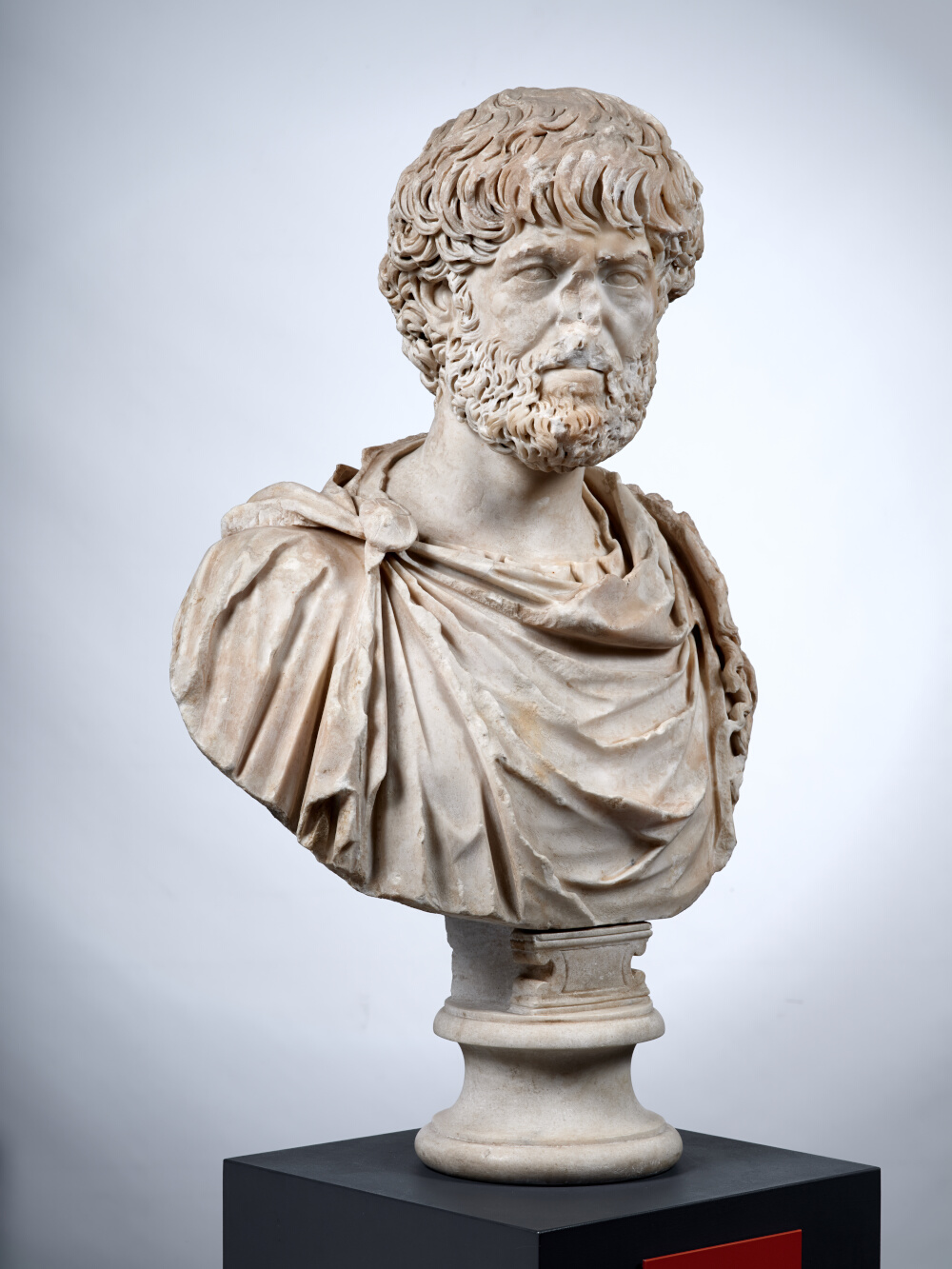
- Date de création
- Approximately 195 - 205
- Material
- Göktepe marble, district 3 (Turkey)
- Dimensions
- H. 62,5 x l. 58 x P. 30 (cm)
- Inventory number
- Ra 65
- Photo credits
- Daniel Martin
This is another example of one of the best workshops in the Urbs, if only we knew the identity of this man, who is most certainly a high-ranking official of the Empire, and a member of the emperor’s entourage, although we have no idea of the position he held on the Chiragan estate.
Various portraits from the very beginning of the Severan dynasty continue to sport a hairstyle that had been popular among young people since the Antonine dynasty: particularly bouffant, and combed from the top of the head in wavy, and apparently disorderly locks that fell quite low on the forehead and the nape of the neck. This style was inspired in particular by images of Antinous, a favourite of Emperor Hadrian (whose influence on portraits of young men from the early Antonine dynasty is well known) and the portraits of Lucius Verus as a child. Up until the beginning of the Severan dynasty, several portraits that were devoid of the shell-shaped curls that prevailed throughout most of the works of the Antonine dynasty, attest to the popularity of these puffy hairstyles, with locks swept across the entire forehead. This high-ranking official discovered in Chiragan is perhaps one of the oldest to still sport this style.
From a technical point of view, it is certainly one of the most beautiful portraits brought to light in Martres-Tolosane. The particularly sensitive modelling of the cheeks and eye surface (with the fine wrinkles chiselled under the lower left eyelid), the astonishing expression that is both piercing and somewhat ironic, and the strength that emanates from the lower part of the face, with its tight jaw, all make for an extraordinary psychological portrait that is indisputably one of the masterpieces of Roman art. It is therefore highly regrettable that 19th century restorers cut so deeply into the nose to attach the prosthesis shown in old photographs, a practice that has irretrievably disfigured this portrait’s profile.
According to J.-C. Balty 2020, Les Portraits Romains : L’époque des Sévères, Toulouse, p. 191-198.
Bibliography
- Balty, Cazes 2021 J.-C. Balty, D. Cazes, Les portraits romains, 1 : L’époque des Sévères, 1.3 (Sculptures antiques de Chiragan (Martres-Tolosane), Toulouse. p. 48, 191-198
- Balty, Cazes, Rosso 2012 J.-C. Balty, D. Cazes, E. Rosso, Les portraits romains, 1 : Le siècle des Antonins, 1.2 (Sculptures antiques de Chiragan (Martres-Tolosane), Toulouse. p. 27, fig. 18-19, p. 268, fig.203
- Cazes et al. 1999 D. Cazes, E. Ugaglia, V. Geneviève, L. Mouysset, J.-C. Arramond, Q. Cazes, Le Musée Saint-Raymond : musée des Antiques de Toulouse, Toulouse-Paris. p. 137
- Du Mège 1835 A. Du Mège, Description du musée des Antiques de Toulouse, Toulouse. no 200
- Du Mège 1844 A. Du Mège, Description du musée des Antiques de Toulouse (document manuscrit ). no 363
- Du Mège 1828 A. Du Mège, Notice des monumens antiques et des objets de sculpture moderne conservés dans le musée de Toulouse, Toulouse. p. 63-64, no 124
- Espérandieu 1908 É. Espérandieu, Recueil général des bas-reliefs de la Gaule romaine, 2. Aquitaine, Paris. p. 72, no 970
- Fittschen 1971 K. Fittschen, « Zum angeblichen Bildnis des Lucius Verus im Thermen-Museum, » Jahrbuch des Deutschen Archäologischen Instituts, 86, pp. 213–252. p. 237-240, fig. 31-32
- Guillevic, Dupuy, Cazes 1989 J.-C. Guillevic, P. Dupuy, D. Cazes, Toulouse et l’Antiquité retrouvée au XVIIIe siècle. Exhibition, Musée Saint-Raymond, toulouse, 8 June - 27 August 1989, Toulouse. no 36
- Joulin 1901 L. Joulin, Les établissements gallo-romains de la plaine de Martres-Tolosane, Paris. p. 337, pl. XXIV, no 308
- Rachou 1912 H. Rachou, Catalogue des collections de sculpture et d’épigraphie du musée de Toulouse, Toulouse. no 65 ou 73 D
- Roschach 1892 E. Roschach, Catalogue des musées archéologiques de la ville de Toulouse : Musée des Augustins, Musée Saint-Raymond, Toulouse. no 65 ou 73 D
- Musée Saint-Raymond 1995 Musée Saint-Raymond, Le regard de Rome : portraits romains des musées de Mérida, Toulouse et Tarragona. Exhibition, Mérida, Museo nacional de arte romano ; Toulouse, Musée Saint-Raymond ; Tarragone, Museu nacional arqueològic de Tarragona, 1995, Toulouse. p. 91, no 49
- N’Guyen-Van 2015 V. N’Guyen-Van, « Reconstruire un système politique d’après ses acteurs. Les chevaliers romains de la période sévérienne (193-235), » Hypothèses, 1 (18), pp. 309–318.
To cite this notice
Capus P., "Bust of a high-ranking official of the Empire wearing a fringed paludamentum", in The sculptures of the roman villa of Chiragan, Toulouse, 2019, online <https://villachiragan.saintraymond.toulouse.fr/en/ark:/87276/a_ra_65>.